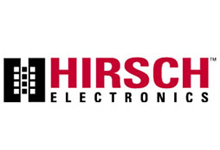 |
| Hirsch supplies solutions for security management and access control to a large number of U.S. Federal agencies |
The majority of the revenue associated with the orders was recognised within the second quarter which ended June 30, 2010. Notice of the awards was first made public by the General Services Administration pursuant to Federal disclosure regulations.
Steve Healy, Hirsch's EVP of Sales & Marketing, noted: "The DoJ orders underscore Hirsch's position as a trusted supplier of advanced security systems for U.S. Federal agencies."
Hirsch supplies solutions for security management and access control to a large number of U.S. Federal agencies on an ongoing basis. In particular, U.S. government customers rely on Hirsch to provide an array of solutions that help them address growing threats and comply with new standards. With the mission of ensuring that the U.S. government's evolving requirements are factored into Hirsch's ongoing research and development, Hirsch's Government Programme Group (GPG) based in Reston, VA, along with Hirsch's close involvement in industry standards bodies, have allowed Hirsch to stay ahead of the competition in many ways.
Many agencies are upgrading their security systems to utilise the new Hirsch cards |
"Hirsch was one of the first to offer a wide range of solutions that help Federal agencies move toward HSPD-12, FIPS 201 and FISMA compliance," explained Lars Suneborn, Hirsch's Government Programme Director. "From credential management systems to readers and controllers capable of using PIV, CAC or TWIC cards, we have helped our government customers not only to solve their current security issues but also to put their smart cards into use as they were intended by Homeland Security Presidential Directive (HSPD) 12."
Since 2008, the Federal government has issued several million Personal Identity Verification (PIV) cards for use by its employees. The smart card contains trusted, government-issued digital certificates which can be used for strong authentication of a cardholder's identity. At the time of the PIV card's introduction, agencies lacked the technology to use the card's high-security features, and most cards have been used solely as a low-security photo ID. However, many agencies are beginning to upgrade their security systems to be able to utilise the new cards for highly secure building access control and computer log-on.
"The PIV-related standards that were first implemented by the Federal government appear to be moving into state and local government, governments outside the U.S., and even corporate America," noted Healy. "I believe Hirsch is well positioned to assist those additional groups as well as Federal agencies and government contractors with their PIV and PIV-I implementations."

















